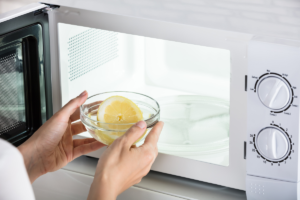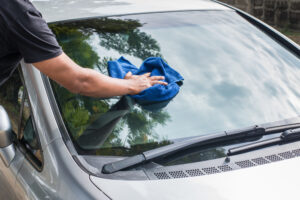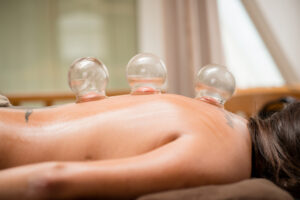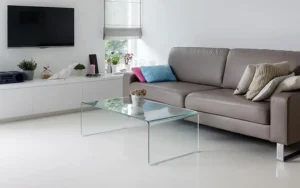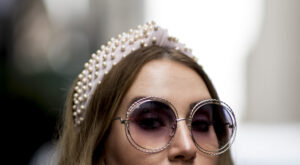Looking to add a little something extra to your stained glass panel? Try an LED backlight! Not only will it make your panel look more impressive, but it will also help to show off your work in the best possible light. Plus, it’s easy to do!
Introduction
If you love the look of stained glass, but don’t want to deal with the high price tag, this led backlight panel is a great alternative. You can use it to light up any stained glass panel in your home, and it’s easy to make!
What You’ll Need
-Stained glass panel -6 volt DC power supply -12 volt DC power supply -LEDs -Resistors -(2) 4 pin connectors -Wire -Soldering iron and solder -Drill and drill bit the size of your LED lead -Hot glue gun and glue sticks
Making the Backlight
The first step is to gather your materials. For this project, you will need:
-An LED light panel
-A power supply
-A frame for the panel
-Stained glass panels
-Male and female electrical connectors
-Wire
Assemble the backlight according to the instructions that come with your LED panel. Once it is assembled, connect the power supply and turn on the backlight to make sure it works.
Next, lay your stained glass panels on top of the backlight. If they are not big enough to cover the entire backlight, you can use multiple panels or cut them to size. Once you have decided where you want each panel to go, mark the positions of the connecting wires on the back of the panel with a pencil.
Remove the panels and drill small holes at your marks. Then, thread the male electrical connectors through the holes from the back side of the panel. Attach the female connectors to the wires on the back of the LED panel. Finally, connect the wire from each connector to its corresponding terminal on the power supply.
Installing the Backlight
For this project you will need:
-An LED backlight kit
-Tape measure
-Stained glass panel
-Plywood
-Screws
-Wire cutters
-Wire strippers
-Soldering iron and solder
-Heat shrink tubing (optional)
First, take your stained glass panel and backlight kit and choose where you want the backlight to be installed. It is best to install the backlight close to the center of the panel for even lighting. Once you have decided on a location, use a tape measure to find the dimensions of your panel.
Next, take the plywood and cut it to be the same size as your stained glass panel. Once the plywood is cut to size, use screws to attach the backlight strip around the perimeter of the plywood. Make sure that the screws are not too long or they will go through the plywood and into your panel.
Now it is time to attach the power supply for your backlight. The power supply will need to be plugged into an outlet, so make sure that it is close enough to an outlet that you can comfortably plug it in. Once you have determined where to put the power supply, use wire cutters and wire strippers to attach two pieces of wire from the power supply terminals to the positive and negative terminals on your backlight strip.
If you are using heat shrink tubing, slide it over the wires before soldering them onto the terminals. This will help to prevent shorts and protect your wires. After soldering on the wires, use heat shrink tubing or electrical tape to cover any exposed wire. Now plug in your power supply and enjoy your new LED backlit stained glass panel!
Tips and Tricks
-Start by soldering two strips of aluminum foil to thepositive and negative leads of the LED.
-Create a paper template of your design.
-Trace the template onto the glass.
-Cut out the design with a glass cutter.
-Clean up the edges with a diamond grinder.
- diffuser film to the back of the glass.
-Attach the LED backlight to the diffuser film.
Conclusion
Assuming you have all of your materials, the first step is to cut a groove in the back of your stained glass panel. This can be done with a Dremel tool or a rotary tool with a cutting bit. The goal is to make a channel that is about 1/4 inch wide and 1/8 inch deep.
Next, you will need to measure and cut your LED strips to size. Make sure that each strip will fit snugly into the groove you just cut. Once you have cut the strips, gently peel away the adhesive backing and place them into the groove.
Now it’s time to wire up your backlight! Take your time and make sure that all of your connections are secure. Once everything is wired up, plug in your power supply and admire your beautiful backlit stained glass panel!
FAQs
Q:How can I make an led backlight for stained glass panel?
A:There are a few things you need to know before starting this project. First, you need to purchase an LED that is specifically made for backlighting. These LEDs are diffused and emit a very wide beam of light, which is ideal for backlighting a stained glass panel. You will also need to purchase a 12 volt DC power supply, which is available at most electronics stores. Finally, you will need to solder the LED to the power supply.
Q:What is the best way to solder the LED to the power supply?
A:We recommend using a soldering iron with a fine tip. This will allow you to get a nice, clean connection between the LED and the power supply.
Q:How do I know if my stained glass panel is large enough to be backlit by this LED?
A:The general rule of thumb is that the panel should be no larger than twice the size of the LED. So, if you are using a 3 inch LED, your panel should be no larger than 6 inches square.
Q:My panel is bigger than 6 inches square, can I still backlight it with this LED?
A:Yes, you can still backlight your panel with this LED. However, you may need to use more than one LED in order to evenly illuminate the entire panel.
Further Reading
If you want to learn more about making an LED backlight for stained glass, here are some articles that might be of interest:
-How to Make a Simple LED Backlight for Stained Glass
-Making an LED Backlight for a Stained Glass Panel
-DIY LED Backlight for a Stained Glass Panel

